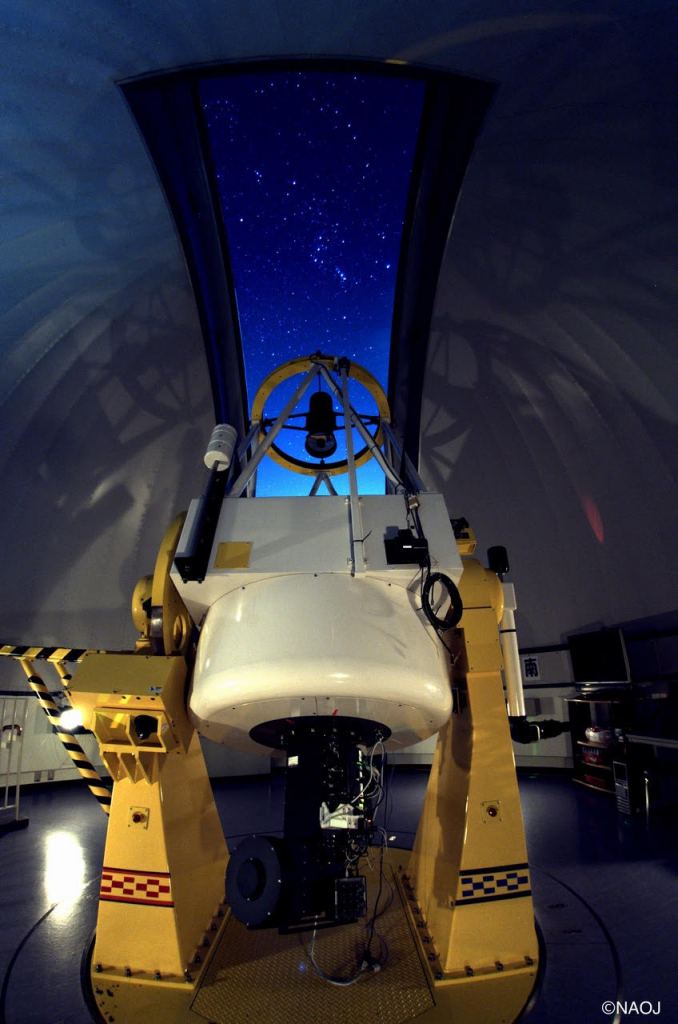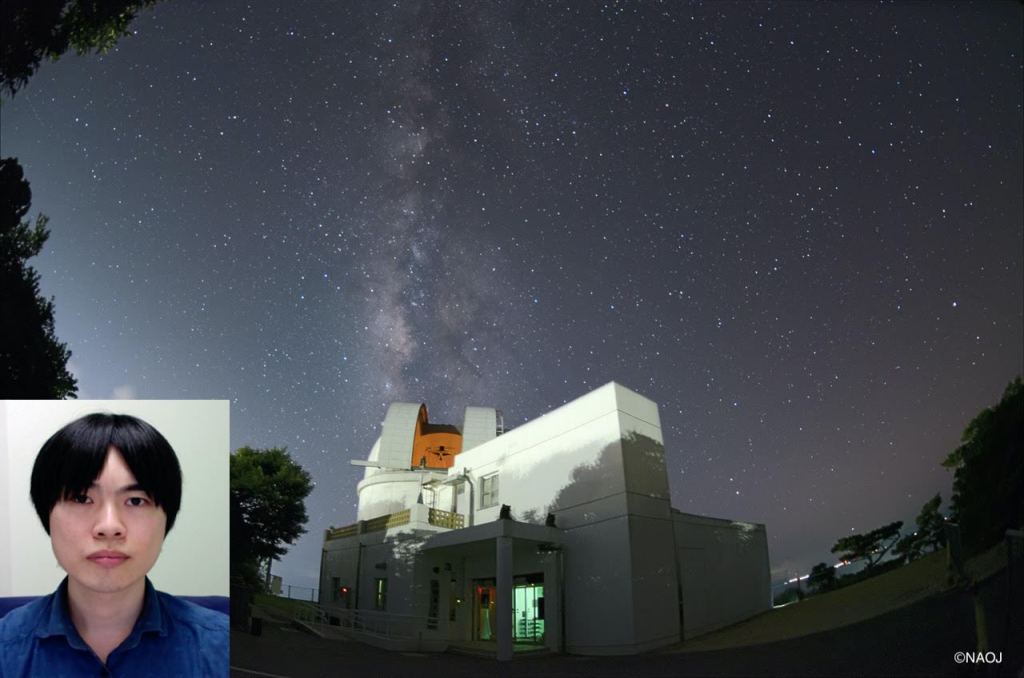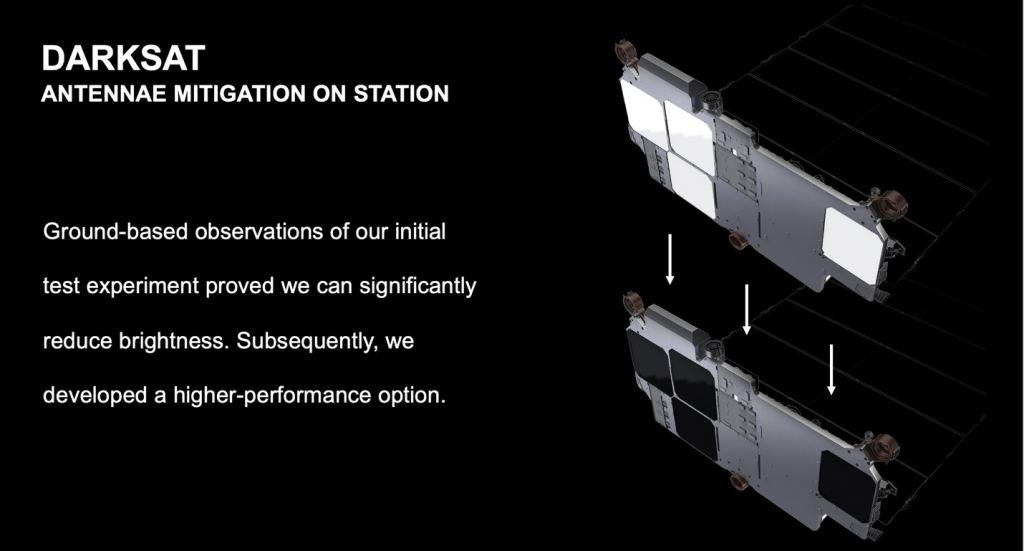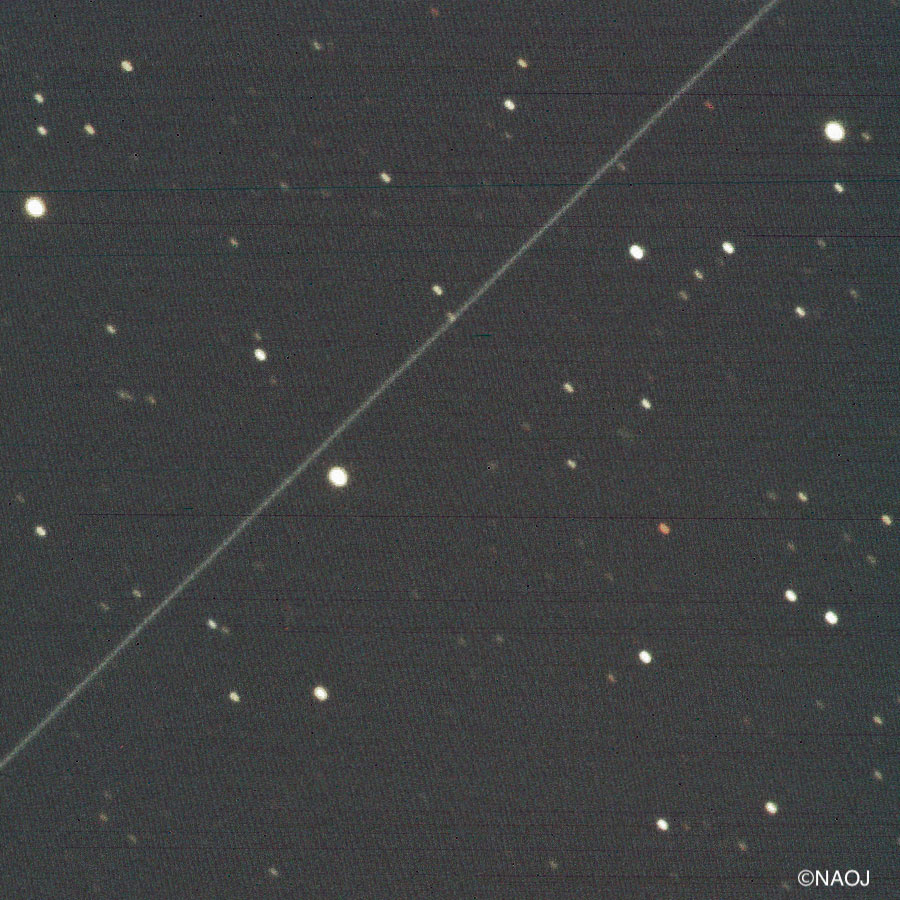Space-based internet service is poised to revolutionize the internet and bring high-speed connectivity to countless communities worldwide. Programs like SpaceX’s Starlink paint a picture of a bright future for the citizens of the world. Like many revolutionary technological advances, there is a dark side to Starlink.
The constellation of hundreds (and eventually thousands) of satellites reflect light back to the Earth, impinging on the darkness of the skies for professional astronomers and stargazers alike. Astronomers report images and data being disrupted by bright streaks left from the satellites passing through their observational fields of view. One potential solution to this issue is applying a dark coating to the reflective antennae on the satellites’ ground-facing side. In January of 2020, SpaceX launched the experimental DarkSat to test the effectiveness of such a coating. Astronomers around the world observed the new satellite. In December of 2020, a team from the National Astronomical Observatory of Japan (NAOJ) released a paper in The Astrophysical Journal showing detailed measurements of the efficacy of DarkSat.
So what were the results of the study? Is DarkSat an effective solution to the astronomical problem posed by Starlink? As is often the case in such studies, the answer is a little complicated.

In a conversation with lead author Dr. Takashi Horiuchi of the Ishigakijima Astronomical Observatory/NAOJ, the results were illuminated. Dr. Horiuchi, an astronomer who spends most of his time observing quasars billions of light-years away, highlighted the fact that his study of the reflectivity of DarkSat was broken up into various wavelengths. In the visible portion of the electromagnetic spectrum, the DarkSat appears half as bright as uncoated Starlink satellites. The coating reduced the apparent magnitude of the satellite down to around a 7. This magnitude is just past the lower limit of brightness at which the naked eye can pick up an object in the night sky, but still far brighter than many astronomically significant targets. Dr. Horiuchi put it this way; “DarkSat is a magnitude of 7, but a typical quasar is a magnitude 18.” It is notable that in the magnitude scale, the higher the number, the dimmer the object. A magnitude 18 quasar is about 23,000 times fainter than a magnitude 7 DarkSat.

Dr. Horiuchi continued to explain that the light energy absorbed by the coating is then converted to heat. All objects with a measurable temperature radiate in the infrared. Since the DarkSat is warmed by its coating more than a typical Starlink satellite, it follows that DarkSat radiates more in the infrared. Essentially, when viewed in IR, DarkSat is brighter than a typical Starlink.
Is the higher brightness in the infrared portion of the spectrum something that will impact astronomical observations? Professor Masatoshi Ohishi, Head of the Spectrum Management Office at NAOJ and another author of the paper, commented, “The higher level of infrared flux would have a negative impact on infrared observations.” Ohishi continued to explain that this is not a surprise and was precisely what was expected of the coating.

It seems clear that the DarkSat solution to Starlink satellite streaking interfering with astronomical observation is flawed at best. The good news for the astronomical community is that SpaceX has already implemented a new solution, VisorSats, which deploy panels, not unlike the sun visors used to keep parked cars cool in the summer. Even with his paper still hot off the presses, Dr. Horiuchi assured me that an in-depth study of the new VisorSats was in the works for his observatory in 2021. “ I would like to continue these observations…we think it’s important to continue to discuss this with the astronomical community of ground-based observations.”
Another positive aspect of the situation is a growing rapport between SpaceX and the astronomical community. Professor Ohishi commented on meetings he has had with SpaceX and spoke on the importance of programs like Starlink. “I would like to stress that we respect the technical advancement developed by SpaceX. Their project aims to make internet connections much better for all of the people in the world; this is very important. At the same time, we have to collaborate with space x on how to keep our environment as clean or as quiet as possible.”
Dr. Horiuchi reflected on the importance of dark skies and preserving the night sky for astronomers and regular folks alike. “Dark skies are beautiful and are a treasure to all of the people around the world.” Thankfully, with SpaceX’s continued dedication to addressing light pollution issues with the ever-growing Starlink constellation and with the tireless work of brilliant astronomers like Dr. Horiuchi, it seems likely that the regions of Earth that are lucky enough to have clear dark skies will still enjoy cosmic vistas for a long time to come.
Lead Image: A streak left against a background of stars demonstrates the reduction in brightness of the dark coating on a SpaceX DarkSat Starlink satellite. Credit NAOJ
Follow Ralph Crewe on Twitter @RalphCrewe
Watch Ralph Crewe explore unusual and fascinating topics on YouTube
MORE:
National Astronomical Observatory of Japan
Simultaneous Multicolor Observations of Starlink’s Darksat by the Murikabushi Telescope with MITSuME


“The Brightness of VisorSat-Design Starlink Satellites
Anthony Mallama
2021 January 2
Abstract
The mean of 430 visual magnitudes of VisorSats adjusted to a distance of 550-km (the operational
altitude) is 5.92 +/-0.04. This is the characteristic brightness of these satellites when observed at zenith.
VisorSats average 1.29 magnitudes fainter than the original-design Starlink satellites and, thus, they are
31% as bright.”
“9. Conclusions
Magnitudes of VisorSat satellites at their 550 km altitude measured by the MMT automated observatory
in Russia and by two visual observers in the United States are analyzed. The main conclusion is that the
mean of 430 visual magnitudes adjusted to a 550 km range is 5.92 +/-0.04. This is their characteristic
brightness when seen at zenith. VisorSats average 1.29 magnitudes fainter than the original-design
Starlink satellites. Thus, VisorSats are 31% as bright as their predecessors.
The following findings are also discussed. There is some indication of a modest brightness decline after
the first few days of a satellite at 550 km and there may have been a general dimming over time in year
2020. Satellites below the operational altitude are not especially bright in an absolute sense but their
apparent brightness is high. No extremely bright flaring of VisorSats has been reported since 2020 April.”
[2101.00374 @ arxiv9
Oy. “[2101.00374 @ arxiv9” = [2101.00374 @ arxiv].